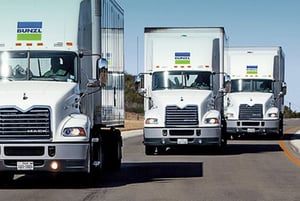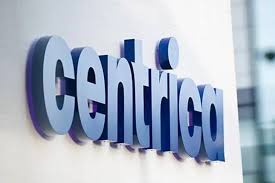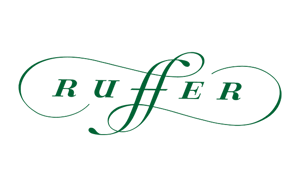Randall & Quilter Investment Holdings Ltd (LON:RQIH), the leading non-life global specialty insurance company focusing on the Program Management and Legacy Insurance businesses, has announced its audited results for the year ended 31 December 2021.
Strategic Update
· Shareholders did not approve the proposed cash acquisition of R&Q at 175 pence per share, which included $100 million of committed capital for R&Q
· R&Q is now focussed on raising at least $100 million via a placing and up to $8 million via an open offer, which will be announced today
FY 2021 Financial Highlights
Program Management
· Gross Written Premium of $1.0 billion (2020: $539 million, a 92% increase)
· Fee Income of $56.1 million (2020: $24.1 million, a 133% increase)
· Pre-Tax Operating Profit of $20.6 million (2020: $3.4 million, a 506% increase)
· Pre-Tax Operating Profit Margin of 35.7% (2020: 14.3%, a 21.4 percentage point increase)
Legacy Insurance
· Completed 15 transactions with Gross Reserves Acquired of $735 million
· Reserves Under Management of $417 million
· Fee Income of 4.25% or $17.7 million beginning in 2022 as legacy transactions ceded to Gibson Re were concluded at year-end 2021
· Pre-Tax Operating Loss of $5.7 million due to $29 million of adverse development and transformation from upfront ‘Day-One’ Underwriting Income to annual recurring Fee-Income
Group
· Pre-Tax Operating Loss of $21.0 million results impacted by:
o Legacy Insurance business model transformation
o $29 million of adverse reserve development
· IFRS Loss of $127.4 million; results primarily impacted by a ~$90 million pre-tax, non-cash charge
· A final dividend for FY 2021 will not be declared; from FY 2022 onwards, the dividend strategy will be to payout 25-50% of Pre-Tax Operating Profit
Outlook
· Program Management expected to achieve $1.75 billion of Gross Written Premium in 2022
o Q1 2022 Gross Written Premium of $370 million; 92% year-over-year growth
o 76 programs at 31 March 2022 (an increase of 7 programs from 31 December 2021)
· Legacy Insurance transactions continue to have heavy weighting towards Q4
o Year-to-date two legacy transactions have been completed
o Strong pipeline of activity on which we expect to earn annual recurring fee income of 4.25% on Reserves Under Management
· R&Q reiterates guidance of achieving in excess of $90 million Pre-Tax Operating Profit in 2024
Summary Financial Performance (see Notes for definitions)
| ($m, except where noted) | ||
| Group Results | ||
| Income Statement | 2021 | 2020 |
| Pre-Tax Operating (Loss) Profit | (21.0) | 20.6 |
| Operating (Loss) Earnings per Share1 | (7.5)¢ | 7.6¢ |
| IFRS (Loss) Profit After Tax | (127.4) | 37.7 |
| IFRS (Loss) Earnings Per Share1 | (46.9) ¢ | 14.2¢ |
| Dividend Per Share | 2.0p | 3.8p |
| Balance Sheet | 31 Dec 2021 | 31 Dec 2020 |
| Tangible Net Asset Value Per Share1 | 130.7¢ | 173.3¢ |
| Net Asset Value Per Share1 | 144.0¢ | 193.3¢ |
| Business Segment Metrics | 2021 | 2020 |
| Program Management | ||
| Gross Written Premium | 1,032.8 | 538.9 |
| Fee Income | 56.1 | 24.1 |
| Pre-Tax Operating Profit | 20.6 | 3.4 |
| Pre-Tax Operating Profit Margin | 35.7% | 14.3% |
| Legacy Insurance | ||
| Gross Reserves Acquired | 735.0 | 641.5 |
| Reserves Under Management | 417.0 | 0.0 |
| Pre-Tax Operating (Loss) Profit | (5.7) | 49.0 |
| 1 On a fully diluted basis |
William Spiegel, Executive Chairman of Randall & Quilter, commented:
“2021 was a significant year for R&Q as we outlined an ambitious Five-Year Strategy that will see us transform into a fee-based, capital lighter business. This strategy will deliver higher quality and more predictable profits in both Legacy Insurance and Program Management, while also enabling us to better leverage our leading underwriting and origination capabilities. In turn, this will support our goal to further develop the compelling opportunities we have identified for these businesses.
We have already taken major strides in delivering against this strategy including the launch of Gibson Re, ongoing momentum in Program Management and a number of organisational improvements which will make us more efficient, strengthen our culture and enhance our risk management. We also have underway a series of projects as part of our goal to be a more data-driven business.
I am pleased to report continued momentum in our two core businesses. Program Management is now fully demonstrating its fee earning power, with Pre-tax Operating Profit increasing nearly fivefold to $21 million, and we expect it to achieve $1.75 billion of Gross Written Premium this year – one year ahead of schedule. Legacy Insurance continues to benefit from attractive market dynamics, completing 15 deals with Gross Reserves Acquired of $735 million. With the launch of Gibson Re, Legacy Insurance is in the process of moving to a recurring fee model and at year-end 2021 had Reserves Under Management of $417 million on which we will earn a 4.25% annual fee, alongside potential performance fees.
We expect to complete our Fundraise in the coming weeks, and I have been encouraged by the strong indications of interest we have had from shareholders. This funding will give us the capital we need to de-lever our balance sheet and maintain the strong financial profile that is an important part of our growth. Looking ahead, I remain truly excited by this business. This can be seen in our reiterated expectation that R&Q will deliver over $90 million of Pre-Tax Operating Profit in 2024 – a major step change in our earnings potential. I would like to thank all our employees for their hard work and our shareholders for their continued support.”
Notes to financials
Pre-Tax Operating Profit is a measure of how the Group’s core businesses performed adjusted for Unearned Program Fee Income, intangibles created in Legacy Insurance acquisitions and net realised and unrealised investment gains on fixed income and lease-based assets.
Operating EPS represents Pre-Tax Operating Profit adjusted for the marginal tax rate, divided by the average number of diluted shares outstanding in the period.
Tangible Net Asset Value represents Net Asset Value adjusted for Unearned Program Fee Income, intangibles created in Legacy Insurance acquisitions, net unrealised investment gains on fixed income and lease-based assets and foreign translation currency reserves.
Gross Operating Income represents Pre-Tax Operating Profit before Fixed Operating Expenses and Interest Expense.
Fee Income represents Program Fee Income, Fee Income on Reserves Under Management and our share of earnings from minority stakes in MGAs.
Program Fee Income represents the full fee income from insurance policies already bound including Unearned Program Fee Income, regardless of the length of the underlying policy period. We believe Program Fee Income is a more appropriate measure of the revenue of the business during periods of high growth, due to a larger than normal gap between written and earned premium.
Unearned Program Fee Income represents the portion of Program Fee Income that has not yet earned on an IFRS basis.
Underwriting Income represents net premium earned less net claims costs, acquisition expenses, claims management costs and premium taxes / levies.
Investment Income represents income on the investment portfolio excluding net realised and unrealised investment gains on fixed income and lease-based assets.
Fixed Operating Expenses include employment, legal, accommodation, information technology, Lloyd’s syndicate, and other fixed expenses of ongoing operations, excluding non-core and exceptional items.
Program Fee represents Program Fee Income as a percentage of ceded written premium.
Pre-Tax Operating Profit Margin is our profit margin on Gross Operating Income.
Gross Reserves Acquired represent Legacy Insurance reserves acquired gross of reinsurance to Gibson Re.
Reserves Under Management represent reserves ceded to Gibson Re for which R&Q earns an annual recurring fee of 4.25%.
Chairman’s Statement
I am pleased to present my first full-year results since becoming Executive Chairman of R&Q in April 2021.
2021 was a significant year for our business as we outlined an ambitious Five-Year Strategy that will see R&Q transform into a fee-based, capital lighter business. Critically we believe this strategy will, over time, deliver higher-quality and more predictable profits in both Legacy Insurance and Program Management while also enabling us to better leverage our leading underwriting and origination capabilities to further develop the compelling opportunities we have identified for both businesses.
The last twelve months have already seen us take major strides in delivering against this strategy, including: the launch of Gibson Re as a legacy sidecar reinsurer to R&Q; ongoing momentum in Program Management with growth in Gross Written Premium (GWP) now expected to be ahead of the target we outlined last year; and adding a number of talented leaders to our management team. We have also begun work on a series of internal projects that will help us deliver on our objective to be a more cohesive, efficient and data-first, global business. Further supporting this progress are our actions as a responsible corporate citizen, and as part of this we have outlined our plans to further develop and implement a clear ESG strategy in 2022.
This was all achieved, once again, against the backdrop of a global pandemic. While we are now seeing encouraging signs of a world returning to normal, COVID-19 continues to have an impact on the lives and health of many. I am hugely proud of how our employees have continued to show resilience, adaptability, and compassion in the face of these challenges. However, we remain mindful that significant macroeconomic and political uncertainties remain. Like everyone, all of us at R&Q have been horrified by what is taking place in Ukraine and our thoughts are with all those impacted by the terrible events. In April 2022, R&Q and our employees made a donation to Save the Children International to support their work providing education, food, water, and cash grants to Ukrainians.
In late March 2022, we consulted the majority of our shareholders on the proposed cash acquisition and $100 million injection of capital into R&Q by Brickell PC Insurance Holdings LLC at 175 pence per share or the alternative of raising $100 million in new R&Q shares. Given the feedback from our shareholders and the uncertainty in the capital markets at the time, we announced on 1 April 2022 that the Board was recommending the cash acquisition of R&Q. At our Special General Meeting on 25 May 2022, our shareholders did not approve the acquisition of R&Q. We therefore announced our intention to raise $100 million by way of a Fundraise to de-lever our balance sheet and improve our financial profile.
I believe that the overwhelming interest we have received from a large number of shareholders to support the Fundraise is a strong demonstration of confidence in our strategy and the future value of the Group.
2021 in review
Our results are examined in more detail in the Chief Financial Officer Review but in summary, 2021 reflected the strategic repositioning of Legacy Insurance to become a more fee-based, capital lighter business and the continuation of strong growth and profitability of our Program Management business.
When setting out our Five-Year Strategy, we were clear that there would be a temporary reduction in near-term profits as a result of repositioning our Legacy Insurance business away from upfront ‘Day-One’ Underwriting Income to annual recurring Fee Income. Typically, a significant proportion of our Legacy Insurance acquisitions are closed in the fourth quarter. The successful launch of Gibson Re in September therefore meant a meaningful percentage of Underwriting Income was shared with Gibson Re, our reinsurance sidecar, which reduced R&Q’s retained portion of that income in exchange for a contracted future fee-stream. Our Pre-Tax Operating Profit (PTOP) fell to a loss of $21.0 million, in part due to the shift to a recurring fee based business, as well as $29 million of adverse development.
However, this number does not capture the contracted fee-stream we will receive from managing legacy insurance reserves for Gibson Re for multiple years. At the end of 2021, we had $417 million of Reserves Under Management (RUM) from four Legacy Insurance transactions; on an annualised basis this represents $17.7 million of recurring Fee Income, however, this Fee Income is not included in 2021 PTOP since these transactions were completed at year-end 2021. It is important to note two further benefits from Gibson Re: in order to complete these four deals, our prior funding model would have required us to raise ~$100 million of additional capital and assume 100% of the risk on these transactions. Gibson Re enables us to continue the growth of our Legacy Insurance business while we transition to become a manager of legacy reserves, sharing risk and alleviating the constraints that a just-in-time capital funding model has historically placed on R&Q.
While we made great strides with Gibson Re, I am disappointed to have to report an extraordinary non-cash, pre-tax charge of ~$90 million. By way of background, R&Q acquired a company over 15 years ago which has a reinsurance policy that provides coverage once claim payments reach a certain level. The reinsurance policy contains an experience refund to the subsidiary of any residual assets under the reinsurance treaty above and beyond that needed to pay claims. The experience refund is treated as an asset under IFRS on the Group’s balance sheet based on the amount expected to be realised in the ordinary course over a 40-year projection period. Recently, claims have accelerated above expectations, leaving the subsidiary with minimal liquid assets while still requiring $34 million in future claim payments before it can access the reinsurance coverage. Management believes it is in the best interests of shareholders for the subsidiary to commute the reinsurance policy in order to provide liquidity to meet anticipated claims rather than having R&Q contribute up to $34 million to this subsidiary over the next two to three years. The impairment of the asset arises from the early commutation of this reinsurance contract. It is important to know that this impairment is not related to our core Legacy Insurance and Program Management businesses nor any of the Accredited companies. The decision we have taken enables us to move forward with a cleaner, less volatile business.
Furthermore, in Q4 2021, the Group was required to use meaningful cash capacity to fund collateral requirements upon certain reserve strengthening in Lloyd’s. Together with the ~$90 million non-cash charge, R&Q requires capital, which we are seeking to raise by way of a Fundraise..
In 2021, we also embarked upon an exciting efficiency project to automate and centralise our business processes. This project will allow us to achieve improved operating leverage as we continue to grow our businesses. We anticipate one-time investment spending over the next year of ~$20 million in this project. This initiative is anticipated to yield meaningful cost savings by FY 2024.
Our Group result reflects a year of evolution towards our future state, and I am pleased that we have reported underlying progress in both of our businesses, Program Management and Legacy Insurance. In addition to a number of strategic milestones, this is showcased by our two primary KPIs: growing GWP in Program Management and RUM in Legacy Insurance, each leading to growing Fee Income and highlighting the high quality revenue potential of R&Q.
Program Management
Growth in Program Management continues at pace, with PTOP increasing by 506% to $21 million. We also saw Pre-Tax Operating Margin improve to 36% as we started to see the benefits of operating leverage as the business grows to scale. During 2021, we added 21 new programs and increased Fee Income by 133% to $56.1 million and we remain excited by the potential opportunities in the US, UK and Europe. We have put in place an outstanding team of entrepreneurial leaders in Program Management and, aligned to the continued growing demand we are seeing from both MGAs and reinsurance capital, believe we will continue to enjoy accelerated growth in this part of our business. 2021 Fee Income benefited from the strong growth of Tradesman Program Managers, an MGA in which we own 40%. Tradesman added $11.1 million to our Fee Income.
Based on our success in growing GWP to over $1 billion in 2021, we believe we will achieve our previously announced target of $1.75 billion in 2022 rather than in 2023.
Legacy Insurance
The formation and launch of Gibson Re last September was a landmark moment for Legacy Insurance, underpinning its transformation into what will become primarily a recurring fee-based business. Gibson Re is a Bermuda-domiciled collateralised reinsurer with ~$300 million of third-party capital, which will allow R&Q to support ~$2 billion of Gross Acquired Reserves. Gibson Re will reinsure 80% of R&Q’s qualifying Legacy transactions for up to three years, with R&Q retaining 20%, which will promote alignment of interests. R&Q receives annual recurring fees of 4.25% of RUM for at least six years, plus potential performance fees.
Our ability to successfully raise capital for Gibson Re from a range of sophisticated institutional investors is testament to the strength, track-record, and reputation of our Legacy Insurance franchise. In the last 10 years alone, we have completed over 130 transactions across 38 regulatory jurisdictions. Crucially, this means we have a highly diverse portfolio with respect to both the years in which the books we acquired were written and the classes of business they cover.
While Gibson Re changes the model for Legacy Insurance, what has not changed is the team’s ability to originate and underwrite. In 2021 we completed 15 deals, with $735 million of Gross Reserves Acquired, an increase of 15% relative to 2020. As already stated, under our old model this activity would have required a further $100 million of capital.
Of the 15 deals completed in 2021, four were 80% reinsured by Gibson Re. With RUM of $417 million in our first four months of deployment, we see this as an excellent achievement. We are also pleased that the Gibson Re transaction was recognised in the recent Trading Risk Awards as ‘Non-Life Transaction of The Year’. Our pipeline remains strong, and we continue to be a leading player in small to middle market legacy insurance solutions.
Capital and liquidity framework
Last year we articulated a liquidity and capital framework to help investors understand the capital intensity of R&Q, particularly regarding Legacy Insurance. In response we were successful in launching Gibson Re. We also shared a dividend strategy of paying out 25-50% of PTOP and progressively growing our dividend from 4 pence per share. In H1 2021, we paid a dividend of 2 pence per share. Due to the extraordinary non-cash charge and required Fundraise, we will not pay a final dividend for the 2021 fiscal year. While we will endeavour to maintain our dividend strategy of paying 25-50% of PTOP, we believe it is in the best interest of the Group to not have a minimum dividend of 4 pence per share.
Market and strategy
Last year we set out our ambitious Five-Year Strategy to become a simpler, fee-orientated capital lighter business. There are five pillars of our strategy: Increasing Fee Income, Enhancing Transparency, Automating Processes, Engaging Employees and Acting Responsibly. We have already discussed the progress on increasing Fee Income with the launch of Gibson Re, and what this means for our Legacy Insurance business, as well as the excellent progress against our GWP target for Program Management. I am encouraged to report that we have already made good progress against the other pillars.
Enhancing transparency
As part of this strategy, we have defined a clear set of KPIs which capture the earnings potential of a capital-light R&Q and will enable our stakeholders to clearly assess our progress. These KPIs are:
· As a Group we focus on Fee Income and PTOP
· In Program Management we focus on GWP, Fee Income and PTOP and the corresponding Operating Margin
· In Legacy Insurance we focus on RUM, Fee Income and PTOP and the corresponding Operating Margin
These KPIs reflect the performance of Program Management and Legacy Insurance as primarily fee-generating businesses, while also capturing their ability to effectively grow and deliver operating leverage. Furthermore, we have articulated a capital/liquidity framework, introduced a robust internal Reserve Committee, enhanced our risk framework and optimised our investment portfolio based on appropriate asset-liability management.
Automating processes
In the second half of the year, we began work on an efficiency program. This is a significant organisational change program that will generate significant recurring annual savings by 2024. This program includes transitioning to a single group-wide accounting system, a single global Program Management operating model, moving our data to the cloud and the automation of a number of manual processes.
This automation will also empower our people, letting them spend greater time on the complex tasks associated with underwriting and origination where their skills are most valuable. In practice, automation will allow us to grow our business without adding incremental costs for certain processes. For example, we recently implemented a new piece of software that will deliver significant efficiency for our Actuarial and Finance functions, moving the team from manual data entry to an automated data feed. The new software is highly flexible and gives us data visualisation tools that offer better real-time insights and has increased usability for our underwriters. We are finalising the automation and centralization of the underlying data to save 200-300 hours a month and enhance our reporting capabilities. Another area we are progressing is the use of technology to automate manual processes, including robotic process automation: we have built and successfully launched our first robots, and we have begun to review the next set of process automation.
We are also changing how we process and store documents, again moving away from manual processing, which can be hugely time consuming. We have entered into a partnership with both a provider of a new document management system and a technology company specialising in Artificial Intelligence (AI) applied to documents for classification. This new approach makes it far quicker for our teams to file, retrieve and upload documents while also enabling us to automate monthly claims payment workflows – we have scanned and categorised over 1 million documents in this way.
These examples only represent the start of our efforts to improve processes to support the growth of the business and leverage AI to help us work smarter. Our team has identified a number of areas across our business where we can find similar opportunities to automate reporting processes and document management. As a business that has historically been run on a more traditional basis, the potential upside for R&Q is meaningful, both in the greater efficiency it will create and in the ability to free our people up to focus on more strategic thinking.
Engaging employees
Another key pillar of our Five-Year Strategy is to Engage our People: we operate in businesses that require specialist skillsets aligned to longstanding market relationships. Our culture is one where we aim to motivate our people to be entrepreneurial and accountable and we are grateful for the hard work and dedication from all of our people in the past year. I would like to thank everyone at R&Q for their contribution to our results.
An important focus last year was on putting in place the right leadership team to support our long-term objectives, and we have been able to enter 2022 with an outstanding team in place. The exceptional talent we have added is testament to R&Q’s reputation in the market and shared excitement for what we are building.
In our two core businesses, we added Andy Pinkes as Global CEO of Legacy Insurance, as well as making a number of senior hires in Program Management following the appointment of Pat Rastiello as CEO of Accredited America last year. We now have in place strong management teams for both Legacy Insurance and Program Management, which enables them to align across geographies and fully leverage our pan-Atlantic underwriting and origination capabilities.
From a corporate perspective we have also made a number of key hires. This includes Rob Thomas as Chief Data & Technology Officer as well as further appointments to support our Regulatory, Compliance and Corporate Development functions.
We have also spent time updating our workplace environment, offering our people greater flexibility over how and where they work. In addition, we have implemented regular Town Halls and other communication efforts across the Group including health and wellness tips. Not only will this help us motivate and support current employees, but it will also enable us to attract new talent to R&Q.
Acting responsibly
Issues such as the ongoing pandemic, the increasing urgency over climate action, and the wellbeing of our employees are influencing the way we act and behave as a business. We have taken the first important steps to support us in continuing to be a successful and sustainable long-term business. During 2021, we engaged with our key stakeholders to understand what is important to them from an environmental, social and governance (ESG) perspective and to gain insight into the associated potential impacts on our business, on society and the environment. The Board and leadership teams have been actively involved in selecting the material ESG topics that we will be prioritising in the coming years.
In addition to developing and looking after our people and considering our purpose, we have collected data on our environmental emissions for the first time which will provide us with visibility of our carbon footprint. We are also reviewing our policies, our governance structures and applying the Principle of Sustainable Insurance to ensure we are embedding ESG across our business.
2022 will be an important year for us as we look to develop and implement an ESG strategy which is aligned with and supports our Five-Year Strategy. As we continue to develop our approach, we will ensure that we continue to involve and engage our stakeholders, both internal and external.
Market outlook
We talked in detail last year about how R&Q competes in large and growing markets which enjoy both secular growth and structural protection from the Property and Casualty cycle. This has not changed, and we continue to be excited by what we are seeing in both Legacy Insurance and Program Management.
The legacy market, and our addressable market within this, remains highly attractive as risk carriers continue to proactively manage their capital positions. The ongoing attractive rating environment for ‘live’ business has meant we have seen ongoing strong demand for legacy solutions and expect this to continue through 2022 and beyond. More fundamentally, legacy has now firmly established itself as a permanent part of the capital life-cycle within non-life insurance. With the barriers to entry remaining high, R&Q is strongly positioned.
The program market is also benefiting from equally attractive market conditions as talented underwriters continue to establish their own MGAs and capital providers seek underwriting outperformance. As in the legacy market, R&Q is enviably positioned: we are a genuinely independent program manager with a highly rated balance sheet and licences across Europe and the US. We believe few can match this independence, capital strength and global scale in terms of licenced platforms.
Chief Financial Officer Review
We are pleased to report our financial results for the year ending 31 December 2021, which are now reported in US dollars.
Group
Our KPIs measure the economics of the business and adjust IFRS results to include fully written Program Fee Income and exclude non-cash intangibles created from acquisitions in Legacy Insurance, net realised and unrealised investment gains on fixed income and lease-based assets, foreign currency translation reserves, non-core expenses and exceptional items. While our underlying businesses performed well in 2021, our Group operating results were negatively impacted by reserve development and a non-cash impairment of a structured reinsurance contract that was previously recognised as an asset.
Pre-Tax Operating Loss was $21.0 million primarily due to adverse reserve development of $29 million. Tangible Net Asset Value was $359.6 million, a 24% decrease compared to year-end 2020, primarily as a result of an ~$90 million non-cash, pre-tax charge. On a fully diluted basis, our Operating Loss Per Share was 7.5 cents and our Tangible Net Asset Value Per Share was 130.7 cents.
One of our objectives is to grow the relative contribution of Fee Income to total Gross Operating Income. Our Fee Income was $56.1 million, a 133% increase compared to 2020 and represented 41% of Gross Operating Income, an increase of 24 percentage points compared to 2020.
Our IFRS Loss After Tax was $127.4 million during the year and Net Asset Value was $396.5 million, a 25% decrease compared to year-end 2020 primarily due to adverse reserve development and an~$90 million non-cash, pre-tax charge. On a fully diluted basis, our Loss Per Share was 46.9 cents and our Net Asset Value Per Share was 144.0 cents.
Program Management
Our Program Management business continued to grow rapidly in 2021. We had 69 active programs, an increase of 21 programs compared to 2020 and Gross Written Premium was $1.0 billion, a 92% increase compared to 2020. Our results are demonstrating the benefits of scale as we earned a Pre-Tax Operating Profit of $20.6 million, a 506% increase compared to 2020, representing a 35.7% margin on Gross Operating Income, an increase of 21.4 percentage points compared to 2020.
The primary driver of Pre-Tax Operating Profit is our Fee Income, which represents Program Fee Income from written premium ceded to reinsurers and our 40% minority stake in Tradesman Program Managers, which increased from 35% in Q2 2021. Fee Income was $56.1 million, a 133% increase compared to 2020, which included $11.1 million from our minority stake in Tradesman Program Managers. The Program Fee averaged 4.7%, an increase of 0.2 percentage points compared to 2020, and we expect Fee Income to generally grow in line with Gross Written Premium. Underwriting Income represents our ~7% retention of Program Insurance risk. Our Underwriting Loss was $1.1 million primarily due to the purchase of reinsurance to minimise earnings volatility. We expect Underwriting Income to be roughly break-even as we purchase less reinsurance consistent with our risk appetite, as well as diversify our business away from programs that consume such coverage. Our Investment Income was $2.7 million, a slight increase compared to 2020. Finally, Fixed Operating Expenses increased 83% compared to 2020 due to the expansion of our staff and a higher allocation of corporate expenses.
Legacy Insurance
Our Legacy Insurance business continued to grow, concluding 15 transactions with Gross Reserves Acquired of $735 million, an increase of 15% compared to 2020. 2021 was the first year of utilising our Gibson Re sidecar, where we reinsured 80% of the reserves from four transactions. At year-end 2021, we had Reserves Under Management of $417 million, which will provide annual recurring Fee Income of 4.25% or $17.7 million beginning in 2022. Our Pre-Tax Operating Loss was $5.7 million due the impact of reinsuring upfront Underwriting Income to Gibson Re as well as adverse reserve development.
Currently, the primary driver of our Pre-Tax Operating Profit is our Underwriting Income, which represents tangible day one gains on retained transactions originated during the year as well as claims management of retained transactions closed in prior years. Underwriting Income was $58.5 million, a 44% decrease compared to 2020 due to ceding Underwriting Income to Gibson Re and $29 million of adverse reserve development, primarily in our Lloyd’s business. In the future, we expect Fee Income to be the primary driver of Pre-Tax Operating Profit as we grow our Reserves Under Management. Our Investment Income was $19.3m, a 15% increase compared to 2020 driven by acquired assets on transactions. Finally, our Fixed Operating Expenses grew 17% compared to 2020 primarily due to higher corporate allocations.
Corporate and other
Our Corporate and Other segment includes unallocated operating expenses and finance costs. Unallocated operating expenses were $16.0 million, a 25% decrease compared to 2020 primarily driven by higher allocations to the two business segments. Interest expense was $22.7 million, an 89% increase compared to 2020 due to the issuance of $125 million of subordinated debt in H2 2020.
Cash and investments
Our Cash and Investments at year-end 2021, excluding funds withheld, was $1.8 billion. We produced a book yield, which excludes net realised and unrealised gains on fixed income assets, of 1.4%, a decrease of 20 bps compared to 2020 due to the higher weightings toward non-US dollar assets acquired in Legacy transactions.
We maintain a conservative, liquid investment portfolio so that we can produce consistent cash flows to meet our liability obligations, while also earning a reasonable risk-adjusted return. 97% of our portfolio was invested in cash, money market funds, and fixed income investments. Of our fixed income investments, 97% were rated investment grade. After cash, which comprised 14% of our portfolio, our largest allocations were to corporate bonds (43%), government and municipal securities (24%), asset-backed securities (17%) and equities (3%). We have extended duration in our portfolio to both better match our expected liability cashflows and to capture additional investment return as the yield curve has steepened; our interest rate duration was 3.2 years at year-end 2021 compared to 1.8 years at year-end 2020.
During 2021, financial markets witnessed an increase in interest rates, with much of the increase occurring in the 4th quarter of the year. As a result, our investment portfolio experienced unrealised net investment losses of $18.4 million which are included in our IFRS results.
Capital and liquidity
Our preliminary Group Solvency ratio was at our target level of 150%, which represents a decrease of 38 percentage points compared to year-end 2020. Our adjusted debt to capital ratio, which provides for partial equity credit on our subordinated debt, was 37%, an increase of 9 percentage points compared to year end 2020 primarily due to the non-cash, pre-tax charge of ~$90 million. We have received pre-emptive waivers of certain financial covenants from our bank lenders until our Fundraise is complete in July 2022.
| Randall & Quilter Investment Holdings Ltd. |






































